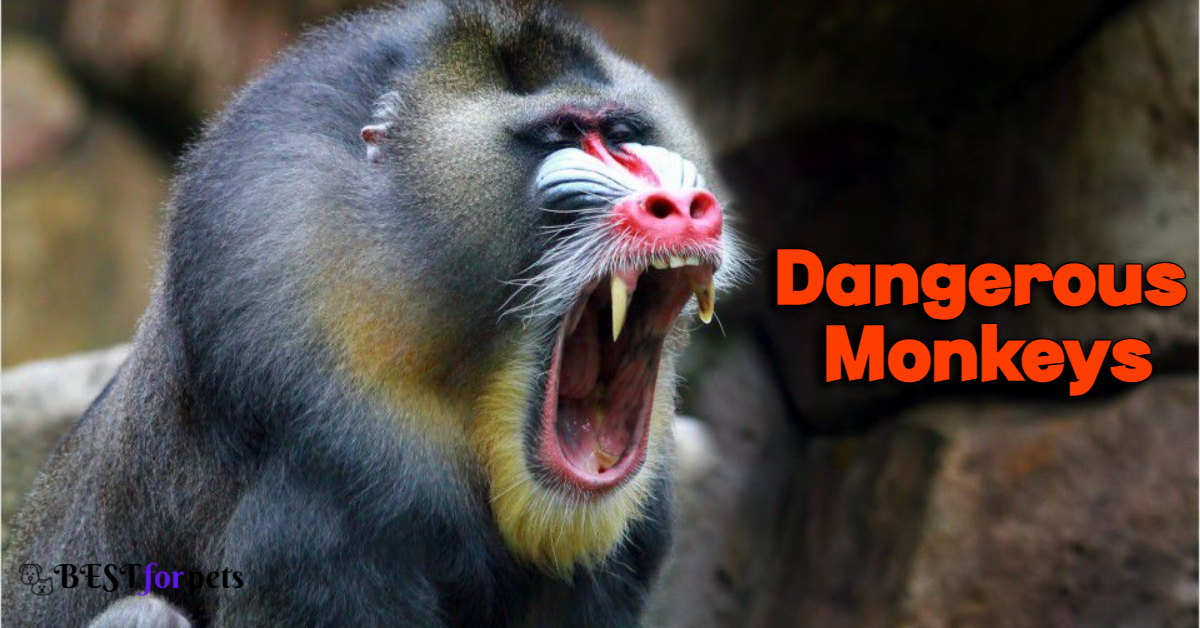Monkeys, known for their agility, intelligence, and often playful nature, can be captivating to observe in their natural habitats. However, not all monkeys are harmless. Some possess traits and behaviors that make them potentially dangerous to humans and other animals. In this blog post, we’ll explore the top 10 most dangerous monkeys in the world, shedding light on their characteristics and the reasons they are considered perilous.
10 Most Dangerous Monkeys in the World
1. Chimpanzee
Chimpanzees are one of our closest relatives in the animal kingdom and share about 98% of their DNA with humans. They inhabit the dense forests and savannas of Africa and are known for their exceptional intelligence, tool-making abilities, and complex social structures.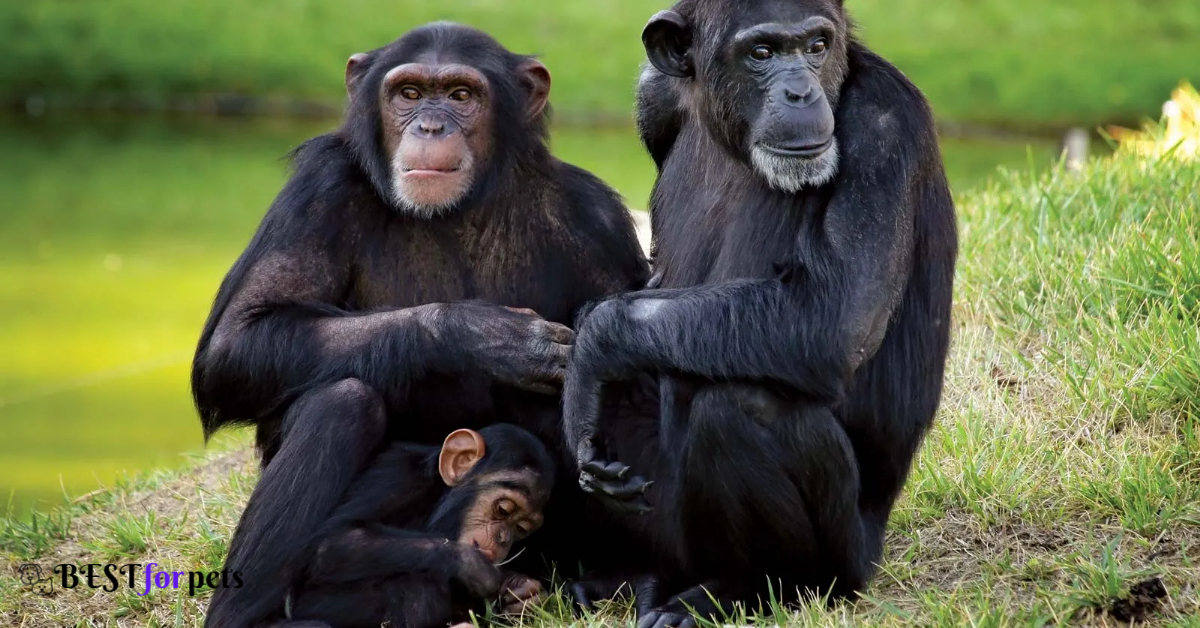 Chimpanzees are both herbivorous and carnivorous, feeding on fruits, leaves, insects, and occasionally small mammals. While they can exhibit cooperative and social behavior, they can also be aggressive and territorial. Chimpanzees have been documented engaging in acts of violence, particularly among competing groups or when they feel threatened, making them one of the more dangerous primates.
Chimpanzees are both herbivorous and carnivorous, feeding on fruits, leaves, insects, and occasionally small mammals. While they can exhibit cooperative and social behavior, they can also be aggressive and territorial. Chimpanzees have been documented engaging in acts of violence, particularly among competing groups or when they feel threatened, making them one of the more dangerous primates.
2. Baboon
Baboons are medium to large-sized monkeys that are found in various habitats across Africa and parts of Arabia. They are highly adaptable and known for their distinctive appearance with elongated faces and sharp canine teeth. Baboons are omnivorous and opportunistic feeders, consuming a wide range of plant material, insects, and small vertebrates. They live in social groups called “troops” and are known for their complex social hierarchies. When provoked or when they feel their group is threatened, baboons can become aggressive and are known to use their sharp teeth and strong jaws as weapons.
Baboons are omnivorous and opportunistic feeders, consuming a wide range of plant material, insects, and small vertebrates. They live in social groups called “troops” and are known for their complex social hierarchies. When provoked or when they feel their group is threatened, baboons can become aggressive and are known to use their sharp teeth and strong jaws as weapons.
3. Rhesus Macaque (Macaca mulatta)
Rhesus Macaques are Old World monkeys native to South, Central, and Southeast Asia. They are medium-sized primates known for their distinctive pink faces, arched eyebrows, and cheek pouches. These monkeys are highly adaptable and can be found in various habitats, from forests to urban areas.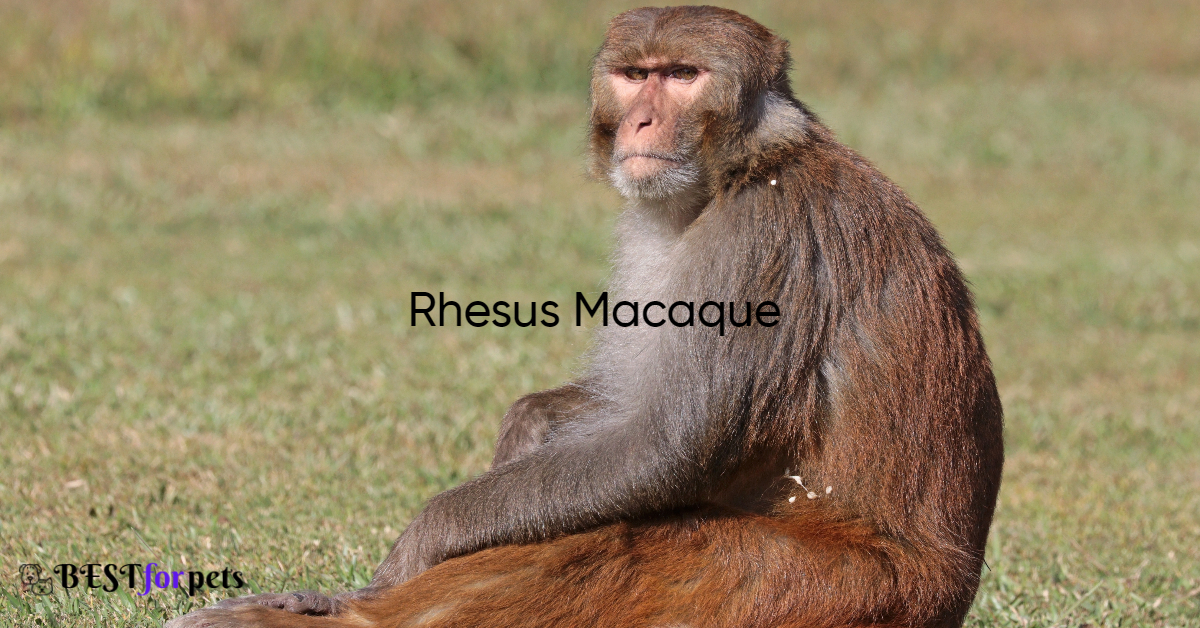 Rhesus Macaques are opportunistic omnivores, meaning they eat a wide range of foods, including fruits, leaves, insects, and small vertebrates. They live in complex social groups and have a strict dominance hierarchy. While they can exhibit cooperative behavior within their groups, they can also be aggressive and territorial, particularly when competing for resources or asserting dominance.
Rhesus Macaques are opportunistic omnivores, meaning they eat a wide range of foods, including fruits, leaves, insects, and small vertebrates. They live in complex social groups and have a strict dominance hierarchy. While they can exhibit cooperative behavior within their groups, they can also be aggressive and territorial, particularly when competing for resources or asserting dominance.
4. Gelada Baboon
Gelada Baboons, often referred to as “bleeding-heart” baboons due to the red patch on their chest, are found in the highlands of Ethiopia. They are primarily herbivorous, feeding on grasses and herbs, and are the only grazing primates.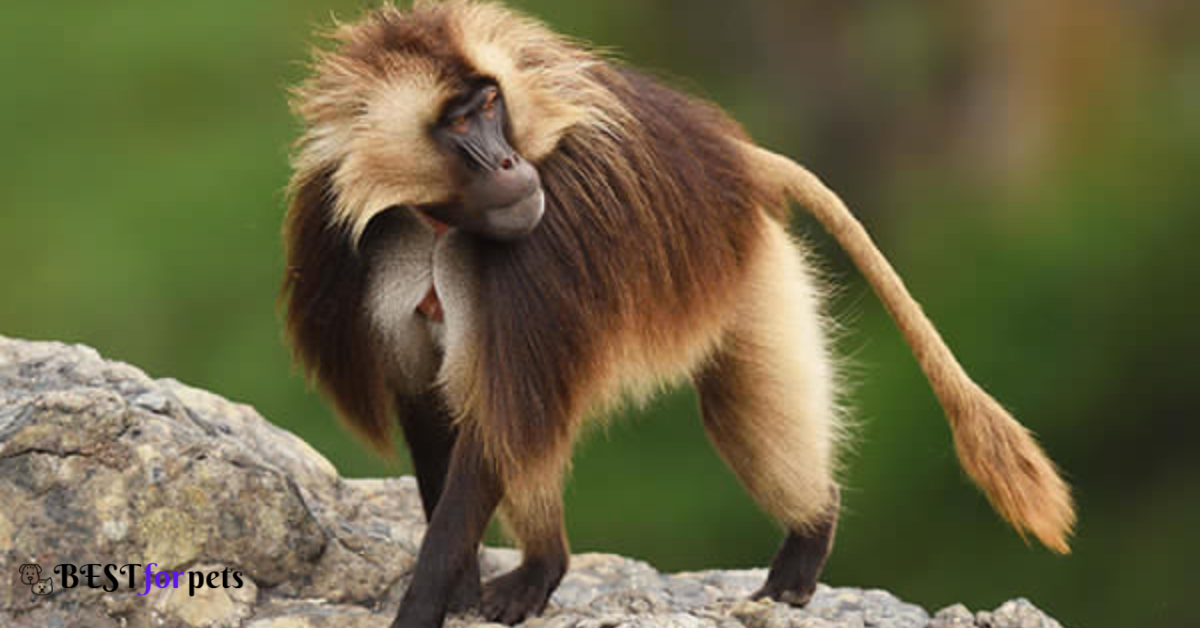 Gelada Baboons are known for their large, gelada-specific social units called “harems.” Within these harems, there is a dominant male and multiple females and young. While they are generally peaceful within their harems, conflicts can arise when competing for mates or resources. Gelada Baboons have strong, sharp canine teeth, which they use for defense when necessary.
Gelada Baboons are known for their large, gelada-specific social units called “harems.” Within these harems, there is a dominant male and multiple females and young. While they are generally peaceful within their harems, conflicts can arise when competing for mates or resources. Gelada Baboons have strong, sharp canine teeth, which they use for defense when necessary.
5. Howler Monkey
Howler Monkeys are New World monkeys known for their loud and distinctive vocalizations. They are found in the tropical forests of Central and South America. These monkeys have prehensile tails, which they use for grasping branches and for balance.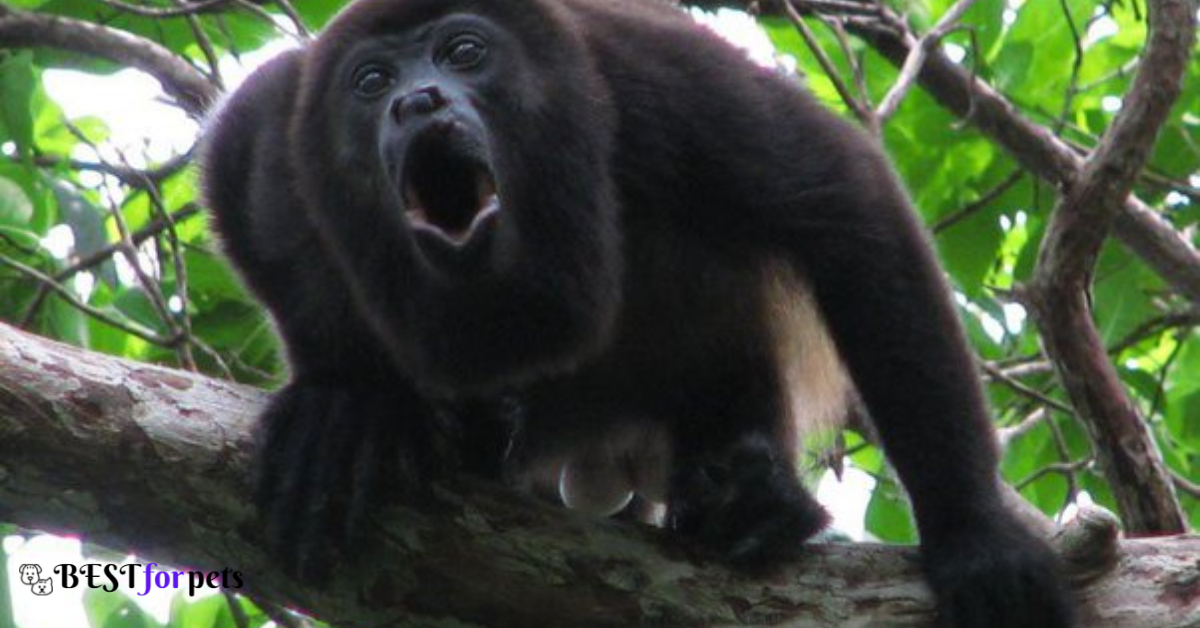 Howler Monkeys are primarily herbivorous, feeding on leaves, fruits, and flowers. They live in family groups with a dominant male, several females, and their offspring. While they are generally not aggressive towards humans, they can become territorial and vocal when they feel their territory is threatened. Their vocalizations are so loud that they can be heard from several miles away, making them one of the loudest land animals.
Howler Monkeys are primarily herbivorous, feeding on leaves, fruits, and flowers. They live in family groups with a dominant male, several females, and their offspring. While they are generally not aggressive towards humans, they can become territorial and vocal when they feel their territory is threatened. Their vocalizations are so loud that they can be heard from several miles away, making them one of the loudest land animals.
6. DeBrazza’s Monkey
DeBrazza’s Monkey is a medium-sized, primarily arboreal monkey species found in the dense forests and swamps of Central Africa. These monkeys are known for their striking appearance, characterized by a white beard and a distinctive crown of white fur on their forehead.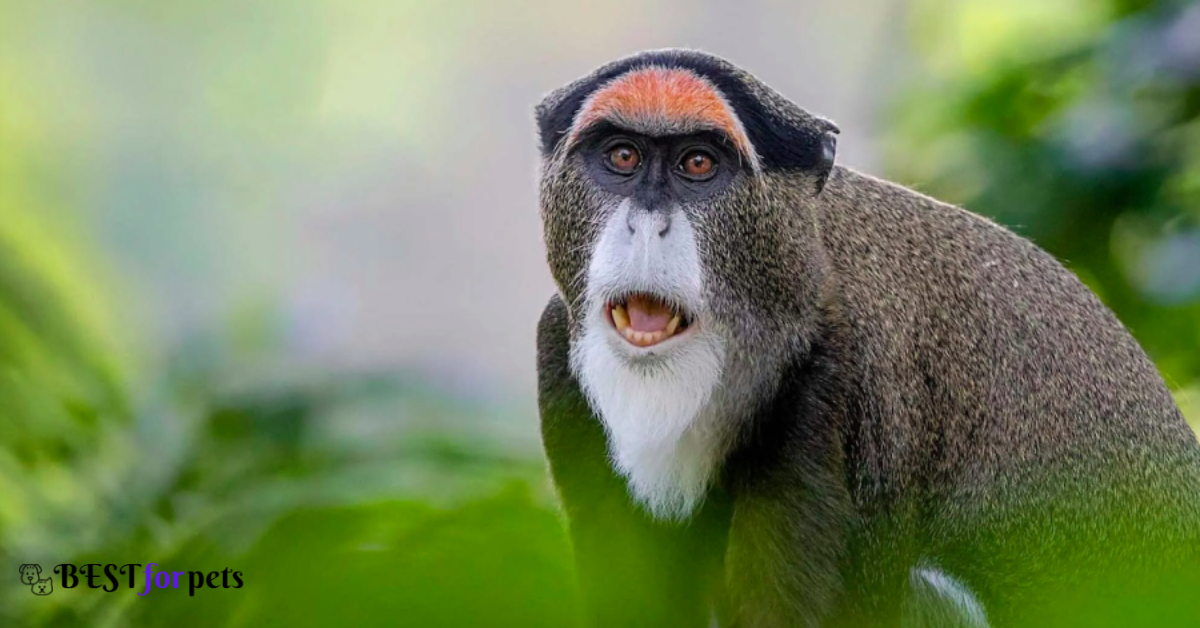 DeBrazza’s Monkeys are herbivorous, with their diet consisting mainly of leaves, fruits, and vegetation. They are generally shy and elusive, often seeking refuge in dense foliage when they feel threatened. When confronted, they may give warning calls or display aggressive behavior, but they are not typically considered aggressive compared to some other monkey species.
DeBrazza’s Monkeys are herbivorous, with their diet consisting mainly of leaves, fruits, and vegetation. They are generally shy and elusive, often seeking refuge in dense foliage when they feel threatened. When confronted, they may give warning calls or display aggressive behavior, but they are not typically considered aggressive compared to some other monkey species.
7. Mandrill
The Mandrill is a remarkable primate known for its striking appearance and social behavior. Native to the rainforests of Central and West Africa, these monkeys are the largest of all monkeys and are easily recognized by their vibrant and colorful faces, which are more pronounced in males. These colorful markings serve as signals of dominance and can change in intensity with the monkey’s mood.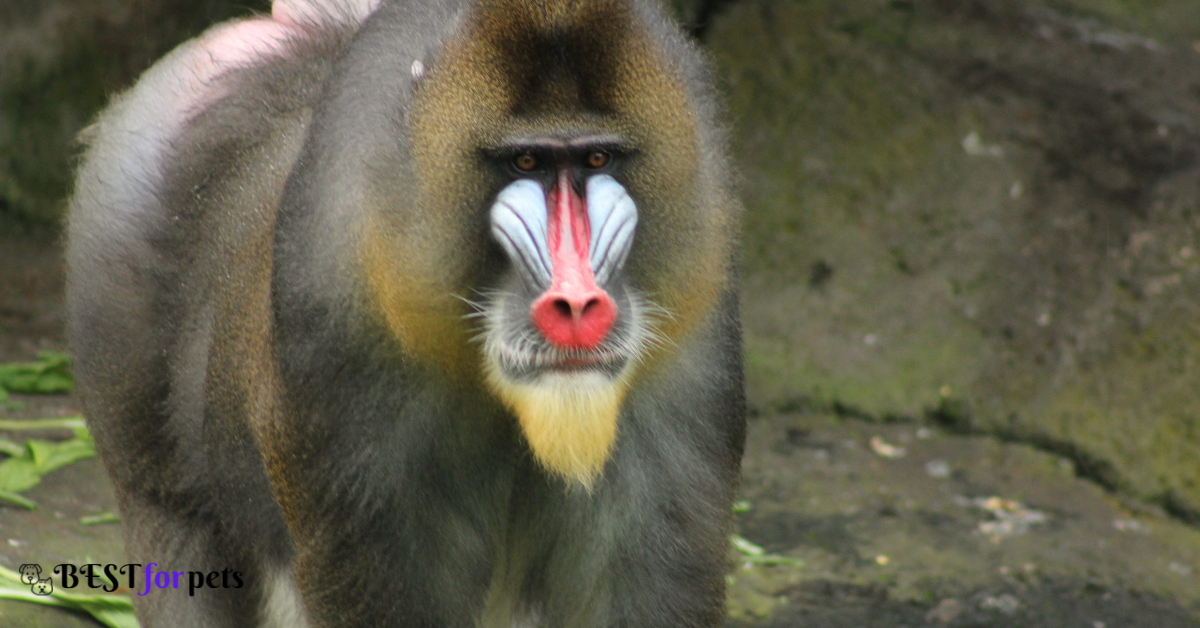 Mandrills are omnivorous and primarily eat fruits, insects, and small vertebrates. They live in large social groups known as “troops” and have complex hierarchies. While they are generally peaceful within their groups, males can become aggressive during mating season, displaying their impressive but intimidating canine teeth to establish dominance.
Mandrills are omnivorous and primarily eat fruits, insects, and small vertebrates. They live in large social groups known as “troops” and have complex hierarchies. While they are generally peaceful within their groups, males can become aggressive during mating season, displaying their impressive but intimidating canine teeth to establish dominance.
8. Capuchin Monkey
Capuchin Monkeys, native to Central and South America, are small to medium-sized primates with a prehensile tail that they use for grasping objects and balancing in trees. They are known for their dexterity and tool-using abilities.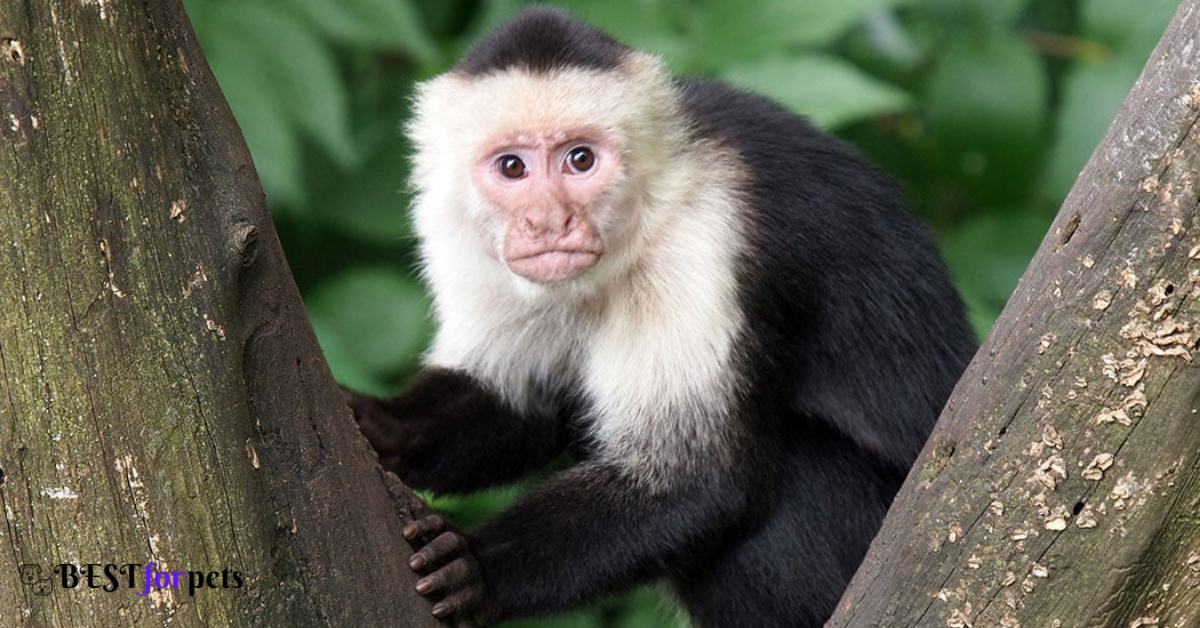 Capuchin Monkeys are omnivorous, consuming a variety of foods such as fruits, insects, small mammals, and even shellfish. They live in social groups and are considered highly intelligent. While they are generally not aggressive toward humans, they can become territorial and protective of their group or resources, occasionally displaying aggressive behavior.
Capuchin Monkeys are omnivorous, consuming a variety of foods such as fruits, insects, small mammals, and even shellfish. They live in social groups and are considered highly intelligent. While they are generally not aggressive toward humans, they can become territorial and protective of their group or resources, occasionally displaying aggressive behavior.
9. Barbary Macaque
The Barbary Macaque, also known as the Barbary ape, is a species of macaque found in North Africa, specifically in the Atlas Mountains of Morocco and Algeria. They are the only macaque species that live outside of Asia.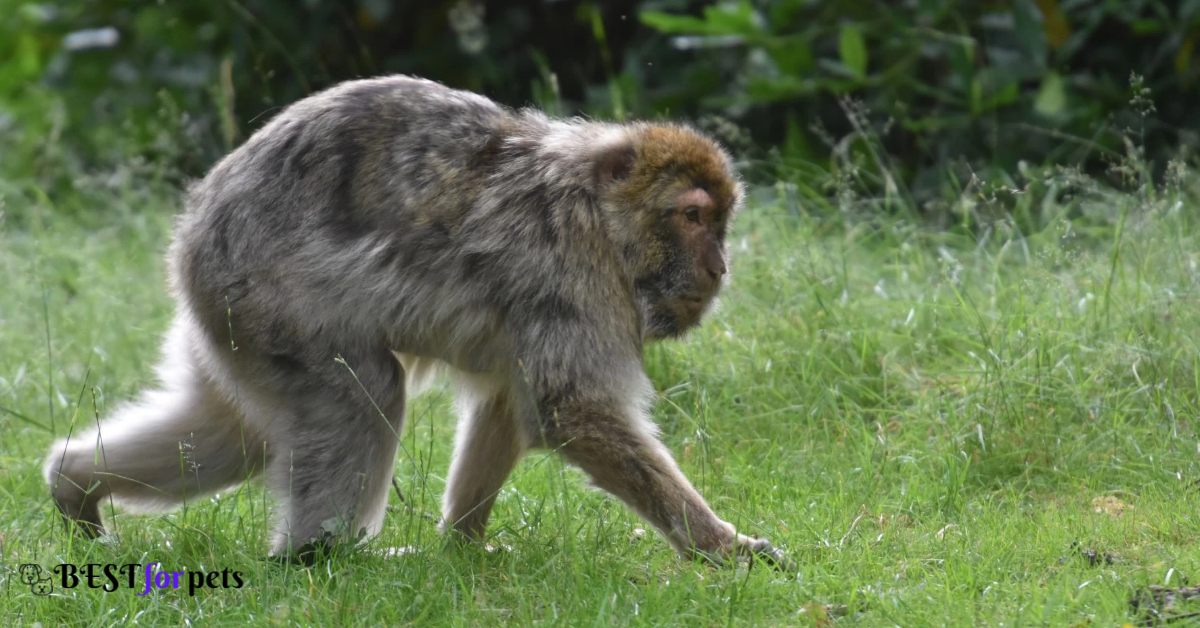 Barbary Macaques are primarily herbivorous, feeding on leaves, fruits, and plant material. They live in social groups and have a strict social hierarchy. While they may appear docile, they can exhibit unpredictable behavior, and their sharp teeth and strong jaws make them potentially dangerous when provoked or when they feel their group is threatened.
Barbary Macaques are primarily herbivorous, feeding on leaves, fruits, and plant material. They live in social groups and have a strict social hierarchy. While they may appear docile, they can exhibit unpredictable behavior, and their sharp teeth and strong jaws make them potentially dangerous when provoked or when they feel their group is threatened.
10. Japanese Macaque
The Japanese Macaque, also known as the snow monkey, is a fascinating primate that has adapted to cold climates. They are native to Japan and are famous for their behavior of sitting in natural hot springs to keep warm during the winter.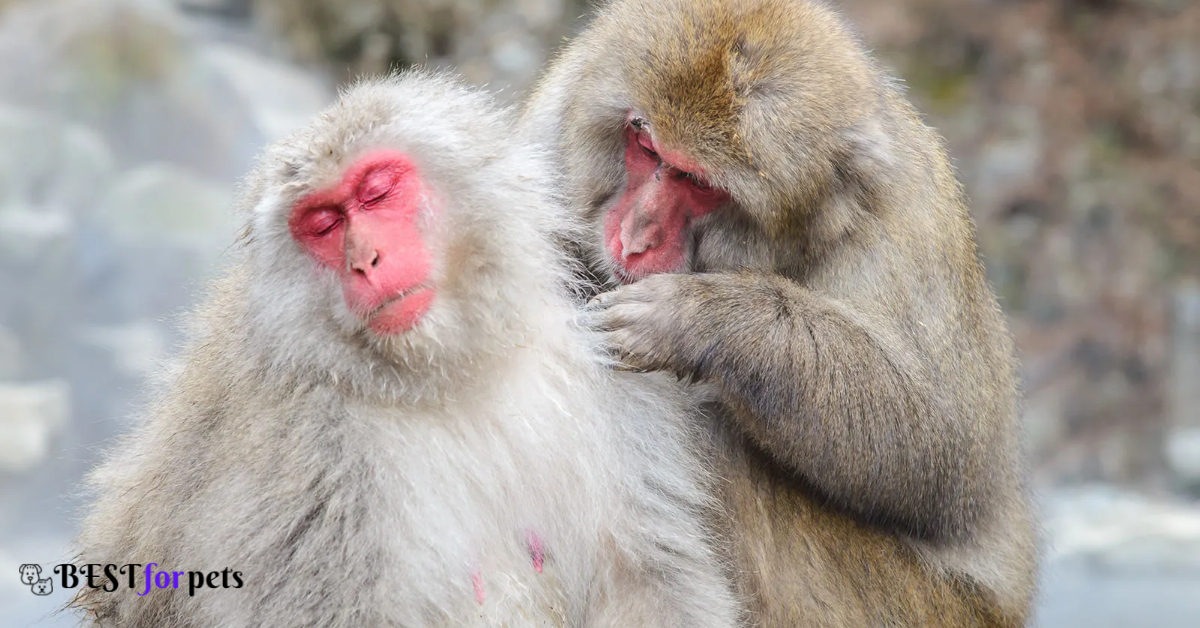 Japanese macaques are highly social animals and live in troops with complex social hierarchies. While they are generally not aggressive toward humans, they can become territorial and may exhibit defensive behavior when provoked or threatened.
Japanese macaques are highly social animals and live in troops with complex social hierarchies. While they are generally not aggressive toward humans, they can become territorial and may exhibit defensive behavior when provoked or threatened.
These macaques have distinctive pink faces and are known for their adaptability and resourcefulness. They primarily feed on a variety of plant materials, insects, and small animals.
Frequently Asked Questions
[sc_fs_multi_faq headline-0=”h4″ question-0=”What makes a monkey species dangerous?” answer-0=”Monkey species are considered dangerous based on various factors, including their size, physical strength, territorial behavior, and aggression when threatened or provoked.” image-0=”” headline-1=”h4″ question-1=”Are all monkeys potentially dangerous?” answer-1=”No, not all monkeys are dangerous. Many monkey species are relatively docile and pose little threat to humans. However, certain species have behaviors or physical attributes that make them more potentially dangerous.” image-1=”” headline-2=”h4″ question-2=”How can I stay safe when encountering monkeys in the wild?” answer-2=”When encountering monkeys in the wild, it’s essential to maintain a safe distance and avoid direct eye contact, as this can be seen as a threat. Do not attempt to feed or touch them, as this can lead to aggressive behavior.” image-2=”” headline-3=”h4″ question-3=”Can monkeys transmit diseases to humans?” answer-3=”Yes, some monkeys can carry diseases that are transmissible to humans, such as herpes B virus. It’s crucial to avoid contact with wild monkeys to reduce the risk of disease transmission.” image-3=”” headline-4=”h4″ question-4=”What should I do if I encounter a dangerous monkey in the wild?” answer-4=”If you encounter a dangerous monkey in the wild, it’s best to stay calm, avoid sudden movements, and slowly back away without making direct eye contact. Do not provoke or antagonize the monkey in any way.” image-4=”” headline-5=”h4″ question-5=”Are there conservation efforts in place to protect dangerous monkey species?” answer-5=”Yes, there are conservation efforts in place to protect endangered and potentially dangerous monkey species. These efforts may include habitat preservation, anti-poaching measures, and public education to reduce human-wildlife conflicts.” image-5=”” headline-6=”h4″ question-6=”Can dangerous monkeys be kept as pets?” answer-6=”It is generally not advisable to keep dangerous monkey species as pets due to the potential risks they pose to humans and the complexities of their care. In many places, it is also illegal to own certain monkey species as pets.” image-6=”” headline-7=”h4″ question-7=”What is the role of zoos and wildlife sanctuaries in conserving dangerous monkey species?” answer-7=”Zoos and wildlife sanctuaries often play a crucial role in the conservation of endangered and potentially dangerous monkey species. They provide safe environments for these animals and contribute to breeding programs and public education.” image-7=”” headline-8=”h4″ question-8=”Are there any documented cases of dangerous monkey attacks on humans?” answer-8=”Yes, there have been documented cases of monkey attacks on humans, especially in regions where humans and monkeys come into close contact. These attacks can result from various factors, including territorial disputes and food competition.” image-8=”” headline-9=”h4″ question-9=”What can individuals do to support the conservation of dangerous monkey species?” answer-9=”Individuals can support conservation efforts by contributing to organizations dedicated to primate conservation, spreading awareness about the importance of protecting these species, and practicing responsible wildlife viewing when encountering monkeys in the wild.” image-9=”” count=”10″ html=”true” css_class=””]
Recommended
1. Canadian Marble Fox : Everything you need to know
2. 15 Animals That Are Quiet | Silent Animals
